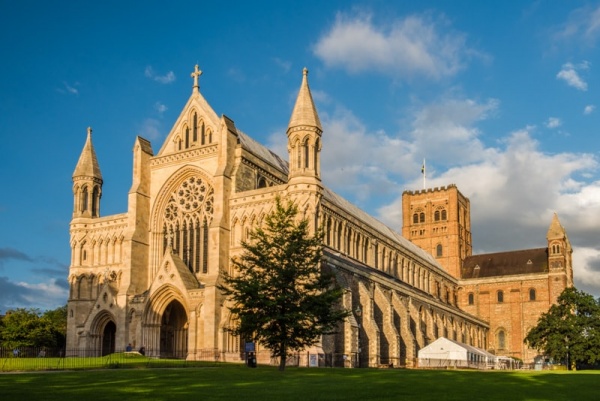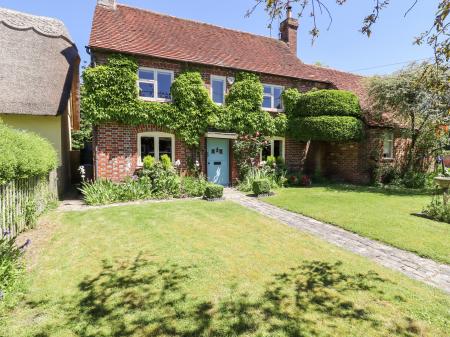

About St Alban
Alban was a citizen of Verulamium, the Roman town that grew to become St Albans. During the reign of the Emperor Diocletian many Christians were persecuted for their beliefs. One such was Amphibalus, a deacon who fled from the authorities. Alban, though himself a pagan, offered shelter to Amphibalus.
During the time he hid the deacon from the Roman authorities Alban himself became converted to Christianity. Eventually both men were captured by the Romans and put to death. Alban could have escaped his fate if he agreed to sacrifice at a pagan altar, but he refused, and was executed.
Alban's Death
Later stories shroud the actual event, but one version says that the route across the bridge leading to the place of execution was so crowded that Alban and his captors could not pass.

Alban went to the river bank and the waters parted for him to cross. When they reached the top of the hill Alban asked for water to drink and a spring miraculously burst forth at his feet. When time came for the execution the appointed executioner refused to act. A soldier took his place, and when he had cut off Alban's head his eyes promptly fell out. The first executioner was then himself executed.
History
The 8th century church established by King Offa was rebuilt in the late 11th century using tiles from the old Roman settlement of Verulam, and St Alban's shrine became one of the most popular places of pilgrimage in England during the medieval period.
The most striking feature of the new church was the tower, built in part with Roman tiles, and designed by Robert Mason (like most medieval craftsman his last name was simply his profession).
Mason was also responsible for the crossing and superb choir. The nave, by contrast, is an odd mix of Norman and later work. There are several excellent medieval paintings on the Norman piers, and the stone rood screen that separates the choir and nave is a creation of beauty. Indeed, St Alban's is memorable for the sheer number and exceptional quality of the medieval wall paintings that have survived.
The choir is separated from St Alban's chapel by another very fine medieval screen. Within the chapel is the shrine of Alban. The original 13th century shrine was broke up at the Dissolution, but the base of the current shrine was made by piecing together over 2,000 small pieces of the original work.
On one side of the shrine is a wooden watching loft, where a monk kept watch over the shrine throughout the day and night (and kept an close eye on the gold and jewels that decorated the shrine). Facing the watching loft is the tomb of Duke Humphrey of Gloucester, brother of Henry V and guardian of Henry VI.

The abbey church was spared at the Dissolution of the Monasteries, though the abbey itself was dissolved.
The church was only raised to cathedral status in 1876, at which time restorations to the west front and the north transept were carried out by Lord Grimthorpe, an amateur architect who was given a free rein due to the fact that he was paying for the work out of his own pocket.
Unfortunately, Lord Grimthorpe proved more enthusiastic than talented. One source calls his west front treatment 'awesomely hideous'. Let us simply pass over his efforts in silence, for there is plenty to see beyond the Victorian restoration.
HISTORIC HIGHLIGHTS
- Medieval wall paintings
- St Alban's shrine
- Stone choir screen
- Duke Humphrey of Gloucester tomb
- Roman bricks used throughout
PHOTOS






Gloucester's memorial
 We've 'tagged' this attraction information to help you find related historic attractions and learn more about major time periods mentioned.
We've 'tagged' this attraction information to help you find related historic attractions and learn more about major time periods mentioned.


